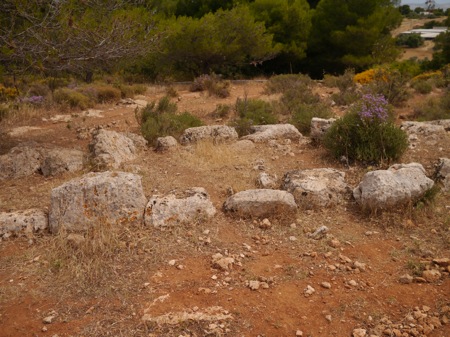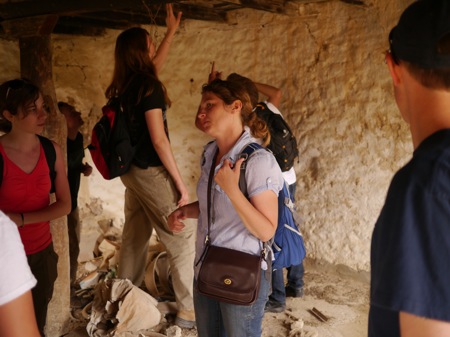In my first decade of archaeological fieldwork, I focused my energies on the Corinthia. Yesterday, in the lead up to the start of the Western Argolid Research Project, the field teams made a quick trip to Ancient Corinth to look at a sample of pottery from the region. I was able to slip away to meet up with my old colleague David Pettegrew and check out a few Corinthian landmarks for his book.

In particular, we checked out the course of the trans-isthmian wall documented by James Wiseman in the 1960s (pdf). Pettegrew is putting the final touches on a book that will document the history of the Corinthian Isthmus. I’ve read a draft; it’s good. So I tagged along, and we walked part of the course of the trans-isthmian wall along the various ridges that dominate the Isthmian “plain”.


I then met up with the WARP team at Nikos’s taverna in Ancient Corinth for a lovely lunch, and we wondered out to the largely abandoned Pentaskophia village to look at formation processes. Taking the field teams to the abandoned village gave us a chance to talk about formation processes. We looked at the way in which tiles collapsed from roofs, the use of sherds and tile fragments as temper in the mud brick, and the various ways in which houses continue to function in the rural landscape after they no longer serve as homes.





From Pentaskouphia village we headed up to Acrocorinth to check out the imposing citadel of the city of Corinth. The grey sky gave our visit some nice flat light for photography and an appropriate romantic ambiance for the place for Byron’s:
Arise from out the earth which drank
The stream of slaughter as it sank,
That sanguine ocean would o’erflow
Her isthmus idly spread below :
Or could the bouts of all the slain,
Who perished there, be piled again,
That rival pyramid would rise
More mountain-like, through those clear skies,
Than yon tower-capt Acropolis
Which seems the very clouds to kiss.







In the final picture, you can just make out the height of Mt. Artimision in the far distance to the left of Pentaskouphi castle. Artimision overlooks our survey area in the Argolid.
Be sure to follow us on Twitter at #WestARP!
